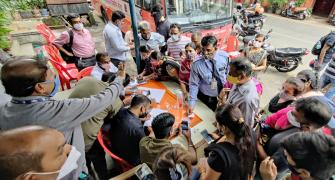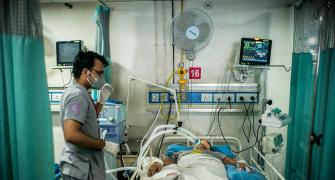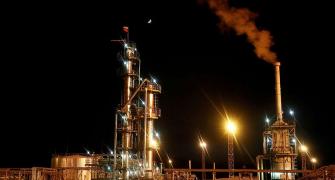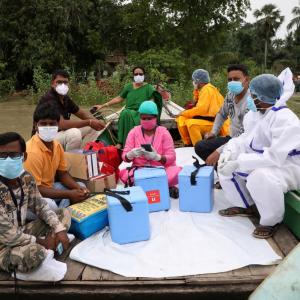Giving rise to fresh worries about the COVID-19 pandemic rearing its head again, the R-factor, which indicates the speed at which the infection is spreading in the country, has risen recently leading to a sluggish pace in the decline of active cases while Kerala and northeast states have emerged as regions of concern.

This is despite the nationwide tally of new cases remaining low, revealed an analysis by researchers at the Institute of Mathematical Sciences in Chennai.
The R-factor has increased slightly to 0.88 in June-end after being at its lowest-ever value of 0.78 from mid-May till late last month, it showed.
This comes amid the unlocking process by many states trying to restore a semblace of normalcy as the deadly second wave, which infected lakhs and killed thousands during its peak in April-May, shows signs of ebbing.
Sitabhra Sinha, who led the team of researchers, said the 'R' for India is still below one, so the number of active cases is decreasing at a much slower rate.
The same trend of slowing down in the rate of decline in active cases is also seen in many states.
"Kerala showed a brief spike in cases and its R continues to hover close to 1. The northeast region is of great concern. Manipur, Arunachal Pradesh and possibly Tripura are showing a rise in the number of cases," Sinha pointed out.
When the second wave of the COVID-19 infection was at its peak, the overall R-value in the country was estimated to be 1.37 between March 9 to April 21.
It declined to 1.18 between April 24 to May 1 and then to 1.10 between April 29 to May 7, according to the analysis.
Between May 9 and 11, the R-value was estimated to be around 0.98. It then to 0.82 from May 14 to May 30. The R-value was 0.78 from May 15 to June 26 and 0.88 from June 20 to July 7.
In Kerala, the R-value is estimated to be around 1.10. As for the northeastern states, the R for Manipur is 1.07, Meghalaya 0.92, Tripura 1.15, Mizoram 0.86, Arunachal Pradesh 1.14, Sikkim 0.88, Assam 0.86.
Rising COVID-19 cases in Kerala, coupled with the recent outbreak of the Zika virus, is a matter of concern for the health authorities as the southern state battles to bring down daily new infections.
The state had reported 14,087 fresh Covid cases on Saturday and 109 fatalities taking the caseload to 30,39,029 and the death toll to 14,380.
Active cases in the state have touched 1,13,115.
While on June 1 this year, Kerala reported 19,760 positive cases, there was a slight decline for a week with 9,313 new cases being recorded on June 7.
However, two days later it again shot up to 16,204.
For over a month, the state has been reporting cases between 11,000 to 13,000 daily.
Kerala Health Minister Veena George had recently said the numbers have spiked due to certain unlock measures and that they were expected to go down.
"India's R has increased a bit to 0.88 from June-end after being at the lowest ever value of 0.78 (since the pandemic began in March last year) from mid-May till late last month," Sinha said.
This means, every 100 infected people on average pass on the infection to 88 other individuals.
If R is lesser than 1, it means the number of newly infected people is lower than the number of infected people in the preceding period which means the disease incidence is going down, the lead researcher said.
"The smaller the value of R is, the faster the disease is on decline. Conversely, if R is greater than 1, the number of infected people is increasing in each round -- technically, this is what we call the epidemic phase. The bigger the number is than 1, the faster the rate of spreading of the disease in the population," Sinha added.
Earlier this month, Manindra Agarwal, a scientist of a government panel tasked with modelling of COVID-19 cases, said the third wave of coronavirus could hit the peak between October-November if Covid appropriate behaviour is not followed, but may see half the daily cases recorded during the second surge.
Agarwal also said the third wave could spread faster if any new virulent variant emerges.










